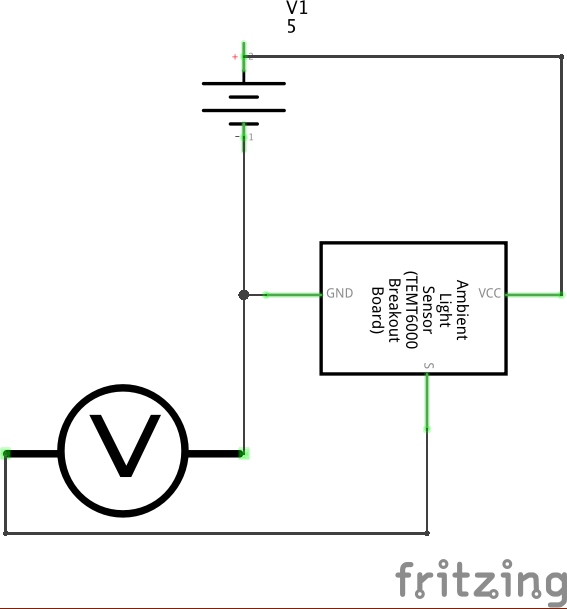Measure the response of a modular sensor.
Many sensors are available as convenient modules which incorporate the required support components. In this example, the module simply requires regulated power to directly output an analog voltage representing a physical property.
A buffered or amplified module can drive a modest current through the output if needed; it has a low-impedance output. Many unbuffered or unamplified sensors only output a small current or voltage and require an amplifier to bring the signal to a usable level.
When in doubt, consult the datasheet or spec sheet for the module for specific ratings on supply voltage and details of the output signal.
For a challenge, try testing a GP2Y0A21YK0F Analog Distance Sensor: these are very useful active sensors which emit infrared light and measure the distance to the nearest object using the parallax of the reflection.
Other challenges: try testing the analog accelerometer in your kit, a joystick, the “Electret Microphone” module which measures the overall sound energy level, or the ENC-03RC single axis gyro. These are all sensors with analog outputs; some of the other stock communicates digitally over I2C, which will use in a later exercise.

